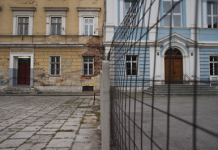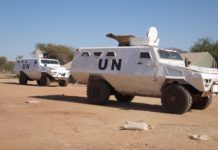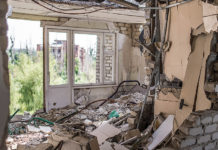Corruption is a sensitive issue in the NGO world. Humanitarian actors need to understand what corruption is, recognise the forms it can take in humanitarian response, determine its true scale and better understand the conditions which lead to it. They also need to identify what mechanisms need to be put in place or strengthened to guard against corruption, even in the most difficult contexts. Mitigating against corruption is necessary if NGOs are to achieve both operational efficiency and accountability to their stakeholders. However, it is also important to recognise that adopting a proactive and transparent approach to dealing with corruption may involve short-term risks to an NGO’s reputation.
What is corruption?
Transparency International (TI) defines corruption as ‘the abuse of power or position for private gain’.[1] This covers ‘active corruption’, such as bribery, and ‘passive corruption’, or allowing oneself to be bribed, as well as misappropriation. The exact scale of the problem in the humanitarian aid sector is by its nature very difficult to determine, but is assumed to be at much lower levels than corruption in the private commercial sector.
Another model of corruption takes into account the sources from which these risks emanate.[2] ‘Contextual’ corruption is linked to the environment surrounding the intervention (corrupt regimes, governments, police forces). ‘Systemic’ corruption refers to the humanitarian system, with its multiple, interacting and interdependent actors. ‘Intra-organisational’ corruption is linked to the constraints inherent within each NGO (human resources, active prevention strategies against corruption risks, verification procedures). This more operational model can help in prioritising and identifying NGOs’ scope of action in light of these risks. Thus, while NGOs have little hope of eradicating contextual corruption, they can and should take steps to prevent or address corruption within their own organisations.
A number of factors which can lead to corruption in humanitarian operations have also been identified.[3] These include lack of planning (or even the impossibility of planning), the number of humanitarian actors present and the financial resources at stake. The way in which the international humanitarian system has developed in recent years, including the exponential growth in the number of NGOs and the development of the humanitarian ‘industry’, has also been a contributing factor. Finally, we should not forget that corruption exists in developed countries, as well as developing ones.
Corruption and humanitarian aid: new dilemmas?
The number of NGOs has grown exponentially over the last 20 years, as has the scale of resources available. In 2010, it was estimated that humanitarian spending reached just shy of $17 billion.[4] Some NGOs have become transnational, with very large budgets. One American NGO, World Vision International, has a budget topping $2.6bn.
NGOs are often reluctant to talk about corruption for fear that it will lead to bad publicity and, consequently, a loss of funding. Working across borders to reach people in need can also give rise to allegations of corruption. The degree of confidentiality necessary to negotiate with those who control access can sometimes make transparency difficult to achieve. Moving clandestinely across borders to access affected populations, as NGOs have done over the years in many conflict situations, can also raise questions about the legitimacy and legality of such action. During the Afghan war in the 1980s, for instance, the Soviet-allied government in Kabul did not want humanitarian actors in Afghanistan, particularly in areas controlled by resistance factions. In this context, humanitarian NGOs had no choice but to cross the Pakistan–Afghanistan border illegally (without permission), through Peshawar and the North West Frontier Province. When humanitarian personnel were captured and held hostage by Soviet or Afghan forces, NGOs argued that the illegality of their actions did not decrease their legitimacy.
Humanitarian organisations cannot ignore the possible consequences of paying bribes or illegal taxes, especially in armed conflicts. Choosing to pay an illegal tax or bribe (in cash or in kind) when confronted by armed guards at a checkpoint may enable the organisation to access people in need, but can be misinterpreted as corruption. Choosing not to pay can mean that humanitarian needs go unmet and that lives may be lost or the risk of harm increased for NGO staff.
NGOs must widen the scope of risk assessment to consider whether their programmes are vulnerable to corruption, such as theft or misappropriation of funds or in-kind goods by warring parties, real or perceived inequities in the distribution of aid and sexual abuse and exploitation of beneficiaries by agency or partner staff. While every situation is different, in all cases NGOs have to balance their commitment to humanitarian principles with the need to control the risk of corruption so as to be truly accountable to their beneficiaries and donors. They should also be transparent with stakeholders about these challenges, and how they may affect decisions about whether or not to continue their work.
Still a taboo?
Some NGOs, particularly in Nordic countries, have chosen to publicise the results of corruption cases as well as the anti-corruption policies that they have implemented. For example, DanChurchAid (DCA) has a website page detailing corruption cases within the organisation and how they were dealt with.[5] Despite the financial crisis that began in 2008, DCA increased its 2009 budget to 498 million DKK (about $123m), a third of which came from private donors (the same proportion as in 2008). Being transparent about corruption does not appear to have negatively affected donor perceptions of DCA. Nonetheless, many NGOs believe that reporting cases of corruption is a major risk with potentially irreversible consequences for humanitarian organisations and their activities. They fear that such cases can undermine their credibility and reputation (particularly with the media), as well as discouraging public and private donations. In France, the Prometheus Foundation, a group of the largest French private companies, including oil, health insurance and pharmaceutical firms, has issued an ‘NGO Transparency Barometer’. The methodology, based only on available public data from NGOs’ websites, has been openly criticised by Coordination Sud, the French NGO forum.[6]
To open up the debate on corruption and to promote preventive measures, Médecins du Monde (MDM) led a study in 2008 which aimed to interview the 17 largest French NGOs regarding their perceptions of corruption, their approaches to field work and appraising and managing risks, and the procedures they had in place to minimise and prevent such risks.[7] Surprisingly, 11 of the 17 NGOs contacted refused to participate in this (strictly confidential) study. Among NGOs that agreed to take part, most recognised that cases of corruption were part of the significant operational challenges around humanitarian aid. The study confirmed what TI had already demonstrated: that humanitarian operations are most vulnerable to corruption in the procurement, transport and distribution of medicines, food, building materials and other consumables, particularly in large, rapid-onset emergencies.[8]

It is also important to remember that most emergency situations occur in countries where corruption is already widespread. The great majority of agency staff questioned in the 2008 study believed that corruption was primarily contextual in origin. Over half had witnessed incidents of corruption, been offered bribes or asked to pay them or had been invited to participate in corrupt activities.
NGOs need to ensure that they are well-informed about the nature and level of corruption in the countries in which they operate. This can be done by using, among other sources, Organisation for Economic Cooperation and Development (OECD) and TI reports on corruption levels. Although NGOs are unlikely to be able to address the root causes of ‘contextual’ corruption at a country level, individually or directly, by working with other NGOs and civil society it may be possible to mitigate the impact on humanitarian operations and local governance. In Bangladesh, for instance, 66.7% of households experienced some form of corruption when trying to access public services. Forty-eight percent of those interviewed encountered corruption in the health service, primarily bribery and nepotism. The most obvious examples were doctors charging for prescriptions and referring patients to their private clinics, and patients having to pay extra fees for tests in government hospitals. Community action at field level resulted in the creation of Committees of Concerned Citizens (CCCs), which acted as watchdogs on local governance and attitudes in both the education and health sectors. This led to dramatic improvements in the quality of care, and significantly reduced bribery, nepotism and negligence.[10]
Accountability initiatives
At the international level, TI has just finalised a practical guide to identifying the weak links in the humanitarian response system in order to improve awareness and as far as possible prevent corrupt practices.[11] The guide also devotes significant attention to how to monitor and evaluate anti-corruption measures. Several NGOs, notably from English-speaking countries, participated in the development of this document, which is more technical than political.
In 1997, the Ethics and Transparency Committee of Coordination Sud drafted a charter of good practice.[12] Most large French NGOs are members of the Comité de la Charte, an independent organisation whose aim is to promote financial transparency. NGOs belonging to the committee are required to have their activities (financial and operational) audited each year by a certified auditor. NGO programmes and accounts are also subject to various external audits (several per year) commissioned by donors including EUROPAID and ECHO, as well as by the Cour des Comptes (the government audit office). In addition, most French NGOs have established internal control mechanisms which enable information from the field to be verified and cross-checked.
Conclusion
One of the lessons of the MDM study, which has also been confirmed by TI, is that it is extremely important for field teams to have appropriate and clearly defined intervention strategies, good knowledge of the field context and training on how to identify and reduce the risks of corruption, particularly operational risk factors associated with the procurement, transport, storage and distribution of relief goods.
As a complex global phenomenon with significant local consequences, corruption is a critical aspect of humanitarian thinking and action. Good governance and transparency are at the heart of NGO legitimacy. NGOs must work with Transparency International, the OECD and other institutional partners and private donors in order to fight corruption effectively. Strengthening community involvement in the implementation and evaluation of humanitarian (and development) programmes improves the ‘acceptance’ of NGOs by the beneficiary population and helps to mitigate against corruption and promote better local governance. We need an open debate on the risks of corruption and how to address them, without undermining donor funding to and beneficiary confidence in NGOs. As well as strictly operational considerations, corruption constitutes an important ethical and political challenge for humanitarian NGOs.
[1] Transparency International, Global Corruption Report, 2006.
[2] Nicholas Stockton, Preventing Corruption in Humanitarian Relief Response, ADB/OECD Anti-Corruption Initiative for Asia and the Pacific, September 2005, http://www.oecd.org/dataoecd/63/49/35592702.pdf.
[3] Daniel Maxwell et al., Preventing Corruption in Humanitarian Assistance: Final Research Report, Feinstein International Center, Humanitarian Policy Group and TI, 2008.
[4] Development Initiatives, GHA Report 2011, http://www.globalhumanitarianassistance.org.
[5] See http://www.danchurchaid.org/about-us/quality-assurance/anti-corruption/cases.
[6] See http://www.promethee.fr/main.php.
[7] MDM in partnership with Sciences-Po Paris, Analyse de la corruption dans le secteur de l’aide humanitaire et perspectives, 2008. The 17 NGOs approached account for more than 80% of French humanitarian aid.
[8] See Preventing Corruption in Humanitarian Assistance.
[9] Michael Sheridan, ‘Massive Fraud Hits Tsunami Aid’, Times Online, http://www.timesonline.co.uk/tol/news/world/article706115.ece.
[10] C. Knox, ‘Dealing with Sectoral Corruption in Bangladesh: Developing Citizen Involvement’, Public Administration and Development, 29, 2009.
[11] TI, Preventing Corruption in Humanitarian Operations, 2010.
[12] See http://www.coordinationsud.org/wp-content/uploads/csud_charte.pdf.
Jérôme Larché
Derniers articles parJérôme Larché (voir tous)
- Guerre au Mali : de l’information monochrome à la stupide rhétorique bushienne – 2 février 2013
- La chasse aux terroristes du Nord Mali : le nouvel Afghanistan français ? – 13 janvier 2013
- 2013, « the yearafter » : du catastrophisme à l’optimisme lucide – 1 janvier 2013







